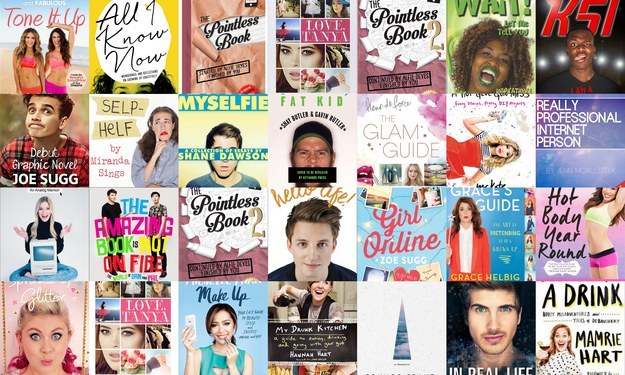When Martin Ball arrived on the South Coast to create a new radio station, he found himself in a well-populated market. ‘With 30 other stations, it was pretty messy,’ he says.
To attract listeners and advertisers, the way he positioned Wave 105 was going to be crucial. ‘We came up with the idea of radio for grown-ups, which was broad and accessible and played contemporary soft rock.’
The strapline, ‘the South’s best variety of hits’, was a spontaneous suggestion from a colleague. ‘Radio is an instinctive medium and a lot of branding is common sense,’ he says. ‘It’s helpful to use consumer testing to back yourself up though.’
In developing a logo for Wave, Ball wanted a clear, concise image that worked both on and off air, as well as appealing to listeners and advertisers. It had to be multi-layered, but totally consistent. It also had to allow for a lot of evolution. In particular, Ball wanted to be able to move from a flat black-and-white image to a four-colour multi-dimensional one. ‘We established a common use of colours and fonts, so the logo can always be pulled back to what is Wave 105.’
Most regional radio stations launching into a market of 1.8 million listeners would expect to have a £1 million budget. Ball had £250,000, so had to be creative in his marketing mix. As well as handpicking some outdoor poster sites, he has relied mainly on relationship marketing.
‘We try to go where the people are, so we have tie-ups with airports, shopping centres, leisure attractions and even house developers. It is a question of going beyond the obvious. If you employ an ad agency, you can spend money like water on traditional media.’
Ball prefers a DIY approach and signs any cheques himself. ‘We do the bulk of marketing in-house with a bit of specialist help. It is more powerful being closer to your listeners.’
Now part of Scottish Radio Holdings after being bought for £18 million in 2001, Wave 105 has become the leading commercial station in the South of England. Currently 350,000 listeners tune in for an average of nearly ten hours a week. ‘We have to invest continually in driving audience growth. We are holding our own against Radio 2, which has been going from strength to strength in most other areas of the UK.’
To compete against Terry Wogan and Jonathan Ross, Ball relies on using regional information strands, particularly travel news. ‘Plus, we are not quite as eclectic as Radio 2. We do not spin off into different sorts of music in the evenings or weekends. The soft-rock feel runs right through to 10pm.’
In moving the brand forward, Ball is now spending £500,000 on marketing with revenues of £4.5 million. ‘It is all about awareness and curiosity. There will always be attrition in our core audience, so we have to keep driving new triallers.’
False positions
‘Like a well-furnished house in the wrong part of town, even the best products will struggle if they’ve been positioned in the wrong way or to the wrong audience,’ says Andy Nairn, planning director at advertising agency MCBD.
To get your brand into the right place at the right time, you cannot be small–minded about it, he says. ‘Too many companies conduct plenty of consumer research to identify what their immediate end-users want, but pay much less attention to the views of other important audiences, from their staff through their distributors to the media. Similarly, they focus exclusively on their product’s functional features, ignoring the fact that most human decision-making is emotionally based.’
‘In today’s world of multiple stakeholders and converging categories, you need to begin the positioning process with a much broader perspective. You should think less about what your products do and more about why your brands exist in the grand scheme of things.
‘While positioning can be a complex process, the end result should be as devastatingly simple as it is immediately recognisable. If you find it takes more than about thirty seconds to explain your new positioning, the chances are that you are over-complicating things. In fact, the best positioning can usually be expressed in one word, and this term often describes a very simple, but incredibly powerful human need. Volkswagen is all about “reliability”, for instance.
‘The danger with any positioning is that the reality may fail to live up to the promise. It is at the practical, executional stage that many brands falter, prompting cynicism among internal and external audiences alike.’
Soul of discretion
Morton Fraser has been practising law for over 175 years. For most of that time, the Edinburgh firm has gone so quietly and discreetly about its business that potential customers have had few perceptions, either positive or negative, about how its brand was positioned.
In 1999, Linda Urquhart was appointed as the first female managing partner of a Scottish law firm. To show Morton Fraser in its true colours she first moved offices and then re-designed the brand.
When she took over, the firm had four different logos, which was confusing for everyone and undermined any efforts at cross-selling. In designing a new brand, she dropped the traditional lawyer’s block black and adopted clear sleek lines finished with an artistic dot.
She then set about positioning Morton Fraser as “go-ahead” with an emphasis on technology and innovation. The messages are mainly taken to market by senior individuals in the firm, including Urquhart herself who won a Corporate Insider award in 2003 for modernising and transforming a traditional firm.
‘Since 1999, people have a completely different perception of us. Before, we were one of Edinburgh’s best kept secrets. Now, we are seen as a firm going places. Only when we rebranded were we able to convince the market that we were a commercial practice.’
‘It is an ongoing process and we try to spend three per cent of turnover on marketing, which is a lot more than we were spending in 1999. And since then we have doubled in size.’
Central organising principle
There is no more powerful wealth creator than an effective brand, but creating one demands far more than a logo backed up by an attractive package and communications campaign, says Rita Clifton, chairman of the world’s leading branding consultancy, Interbrand. ‘A brand needs to become the central organising principle for all aspects of a company’s operations.’
A strong brand, she believes, will display three main characteristics: clarity of what it stands for; consistency in how it is applied throughout the brand experience; and leadership in the way that it constantly renews itself to exceed customer expectations in terms of product, service and creative quality.
‘The elephant trap in any brand development programme is when a company is seen to approach it as a cosmetic marketing exercise. Competitive distinction needs to be stitched in throughout the whole customer experience: from the language used at first contact, to all aspects of the product and service, to in-store experience and after-sales care,’ believes Clifton.
She adds that ‘a brand’s staying power will then be down to the strength of the relationships that are built with customers. Tesco is probably the best example of a company using brand-based innovation around its customers’ life-needs to create a constant steam of relevant products, services and marketing initiatives.’
Growing the brand
In 1994, ex-Marine Neil Laughton walked into Alex Ashworth’s office with £250 and asked him to create a logo for his new business. Because he was a friend of a friend, Ashworth could not really turn him down. The design he developed has taken Office Projects from £30,000 re-fits to the £8.5 million job of managing Rolls Royce’s new office, factory and showroom at Goodwood.
‘It was a clear name, but a bit dull,’ recalls Ashworth, a branding specialist at Manifest. ‘We wanted to express the nature of their business, so we put the O and the P in an office setting. It was an effective visual identity, though a complex one.’
Ashworth and Laughton kept talking about the strategic and creative development of the brand. Still working on a tight budget, the next step was to develop a brochure and other sales tools. Ashworth came up with a project sheet that could either be sent out by itself or could be bound into a proposal.
By the summer of last year, after completing BMW’s Goodwood site, Laughton accepted that Office Project’s visual identity was looking tired and was failing to reflect its new capabilities in running the design, building and furnishing of commercial interiors.
‘We want to position ourselves as a more professional organisation in line with our growth and we want to get to the top level,’ he says. ‘We are still smallish, but we are competing for large contracts. So we have to let our prospective customers know we are a viable option, as well as third parties like architects.’
So he agreed to a radical review of the brand costing £35,000. ‘We have changed the logo, which was quite traumatic, and have a new website. We had an out-of-date brochure, which did not reflect where we now are as people. So we have given the brand some personality, explaining where we have come from and where we are going, rather than just discussing what we have achieved in the last couple of years.’
Laughton, 41, is hoping that this investment will take Office Projects into a new cycle of growth. Turnover currently stands at £9 million and he is hoping to lift this to £25 million in the next three-to-five years.
Watershed
The visual identity of Office Projects is now more appropriate for a target market of larger customers like BMW, says Ashworth. ‘We took a complex image and distilled it, creating a marque that expresses the direction and purpose of the business in a more and simple direct way.’
And for the first time, sales material has a statement of intent. ‘The new brochure still includes project details, but it also talks about the philosophy of the team that is going to make everything happen. Businesses that are becoming medium-sized often find this hard. Maybe it is because the founders want to hold on to their vision and key messages. It is a watershed when they are committed to paper.’
‘Neil is still the figurehead for Office Projects, but the idea is to allow sales people to fulfil his role. We can help arm them to do their job, but ultimately it is going to be down to them.’
Need to know – Brand tips for SMEs
- Invest in design – a picture says a thousand words.
- Listen to your gut feeling – don’t let designers bamboozle you into following fashion.
- Don’t keep changing things. Repeat them over and over.
- Plan to spend four per cent to eight per cent of your turnover in marketing. Strangely, it works.
- Write a list of all the possible things you could do. Then focus on three.
- You can’t work in isolation, so share the plan with any sales folk.
- Building a database of potential customers is your most important marketing activity.
- Don’t advertise unless you have the budget for 100 adverts. Even
- then, only buy ten in advance.
- Nothing hacks customers off more than them thinking you don’t love them anymore.
- Be fun in your tone, be pushy in your close.
Source : Branding consultancy Loewy






